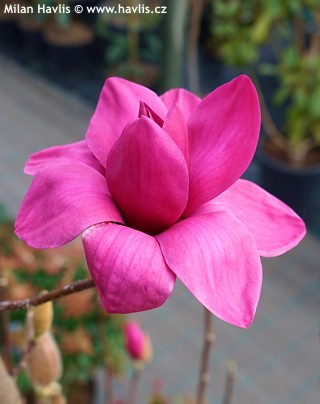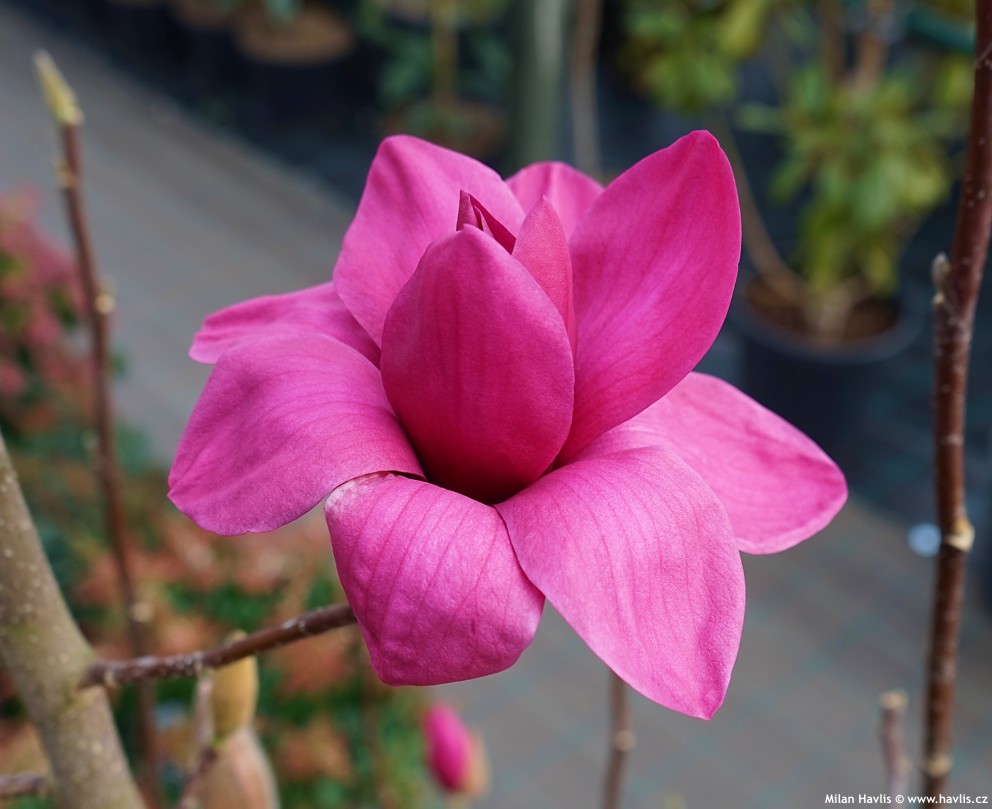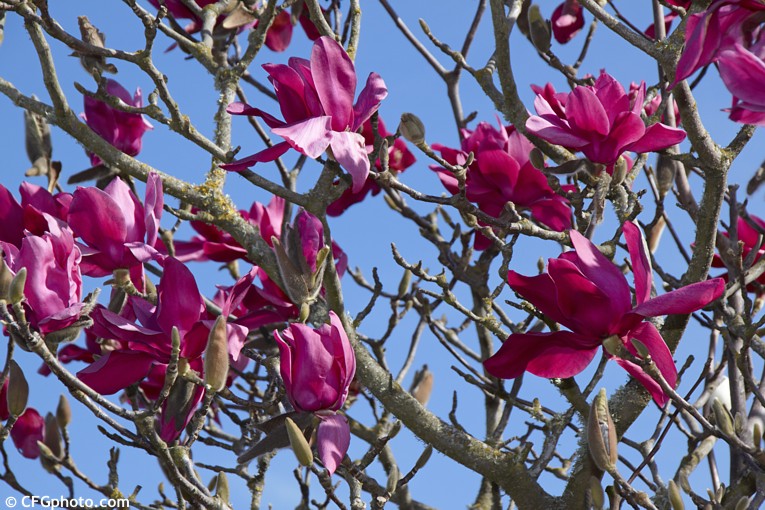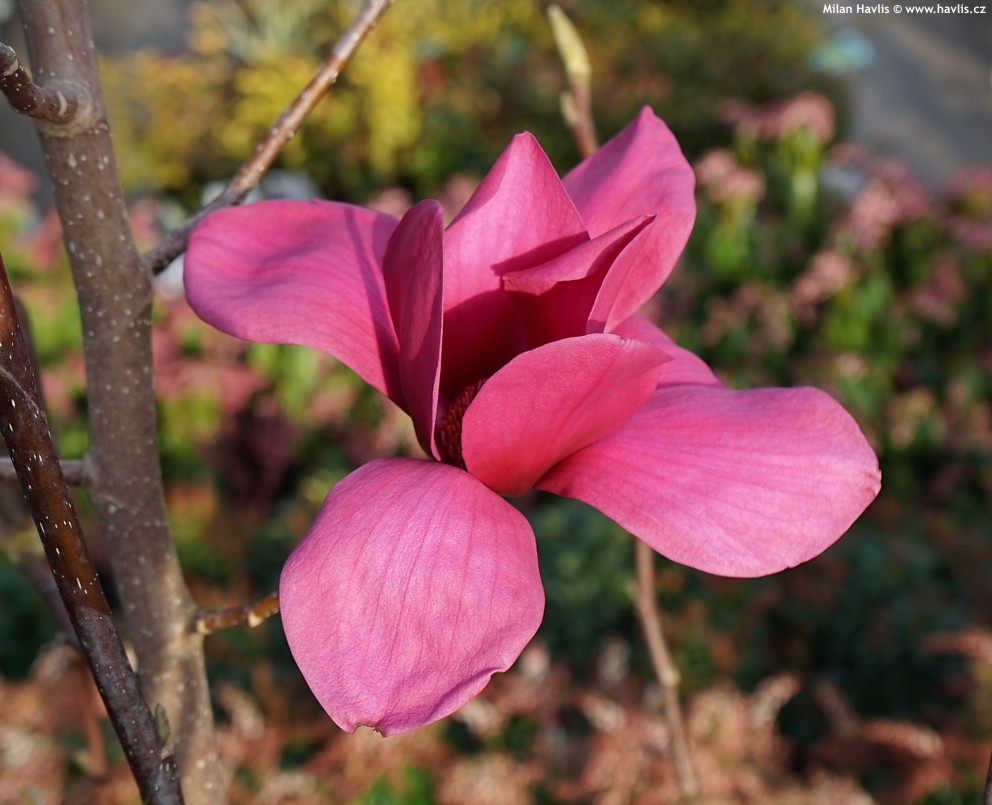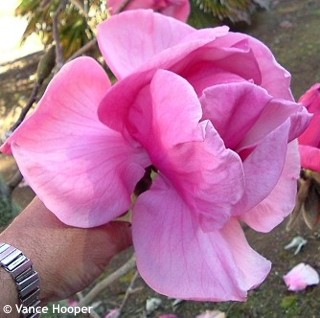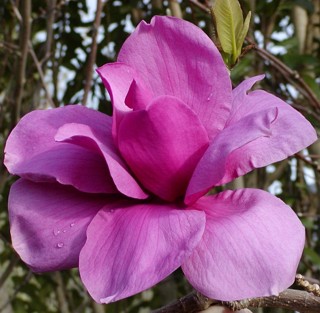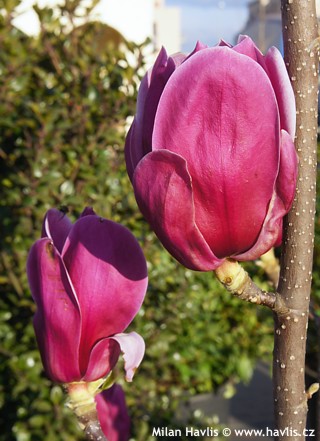Magnolia 'VULCAN' magnolia
Vulcan is an awesome magnolia hybrid raised in New Zealand by Felix Jury in 1990. Yet before it got its attention by gardening public it was used for further hybridizing and became a parent for excellent varieties such as Ian’s Red, Advance, Amethyst Flame, and nonetheless a variety bred by his son Mark and named after his late father Felix.
Vulcan is a result of crossing successful Lanarth magnolia and magnolia liliiflora. Thanks to the first parent it has large, rich purple flowers that are deeper red on the outside and a grade paler on the inside. Its second parent gave it narrower petals and buds as well as later flowering which helps the flowers escape late spring frosts. They have a lovely fragrance.
The deciduous leaves are fresh green, ovate to obovate and densely cover the whole plant when in leaf. Young plants have upright growth and when they reach about 1.5m they slow down and become more rounded producing profusion of flower buds on short branches. Mature trees and shrubs are well rounded and in Central-European conditions get 3-4m tall and wide.
Magnolias are not supposed to be pruned. You can prune old shrubs if ill, or trim them to shape or to reduce size, or make an elementary cut to young plants of unsightly or unhealthy appearance. Do this as soon as possible after flowering to secure setting of flower buds for the following year. Be aware that each magnolia can respond differently to pruning.
Deciduous magnolias are quite easy plants. All they need is light, well-drained, acidic soil with equal moisture throughout the year. Once established they can do with occasional drought but will not look as nice as the ones with regular watering. Just pay attention to how to plant your magnolia. First, find it a spot where it will live forever and ever. It does not like transplanting. And as it makes shallow roots reaching well over its spread stay away from disturbing the roots by digging or messing about around it. Just cover the soil with bark mulch and do not plant anything else near it after say the second year after planting onwards. You could damage the very important top roots that absorb maximum moisture and nutrients from the soil. Also avoid planting magnolia too deep. It is hardy to about -27°C (USDA zone 5).
Last update 3-12-2012

































